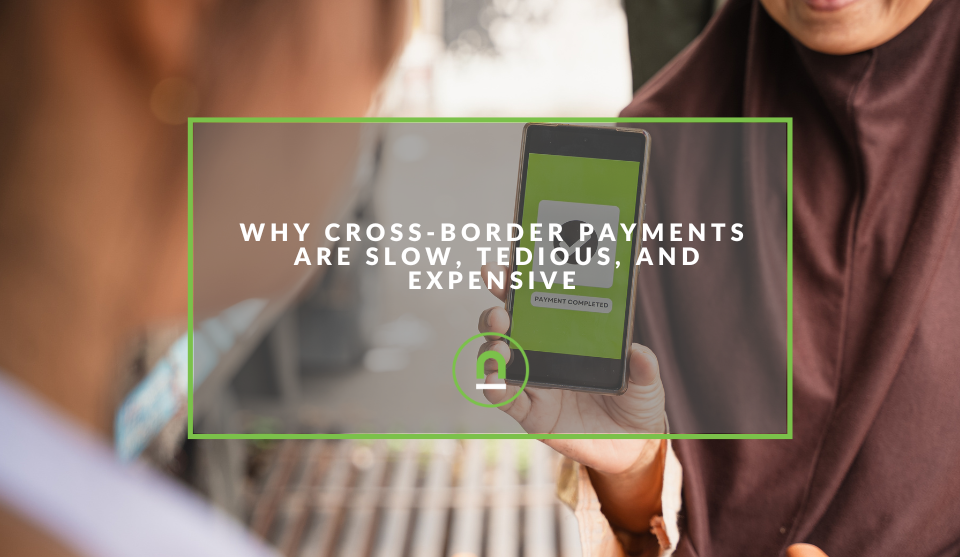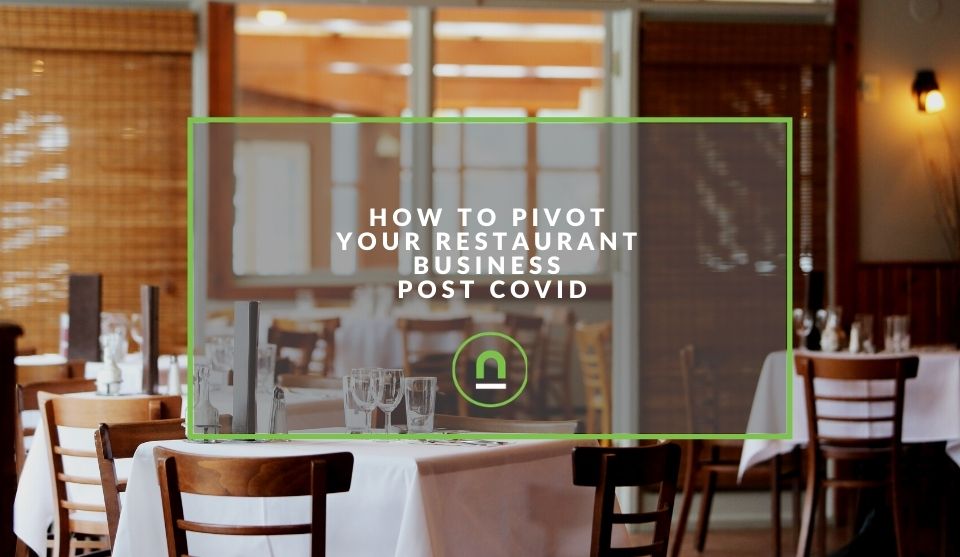Recent posts

Press Releases
Where You Can Find International Remote Jobs For South Africans
23 December 2025

Money Talks
Why Cross-Border Payments Are Slow, Tedious, and Expensive
17 December 2025

Money Talks
The Rise Of Trading Platforms In South Africa
16 December 2025

nichemarket Advice
The South African VAT Threshold Chokehold
05 December 2025
Popular posts
Extravaganza
Trending Music Hashtags To Get Your Posts Noticed
24 August 2018
Geek Chic
How To Fix iPhone/iPad Only Charging In Certain Positions
05 July 2020
Extravaganza
Trending Wedding Hashtags To Get Your Posts Noticed
18 September 2018
Money Talks
How To Find Coupons & Vouchers Online In South Africa
28 March 2019
How To Pivot Your Restaurant Business Post Covid
03 April 2021 | 0 comments | Posted by Che Kohler in Masterchefs
The worst kept secret in the world has to be that things have changed dramatically over the last year. The COVID19 lockdowns have hit businesses hard and changed consumer behaviour, some say forever. We've all had to deal with it in different ways; some were able to adapt, others have not been so fortunate.
Whether you want to call these times unprecedented, uncertain, or just downright awful, these changes have left no economic sector unscathed. While everyone is feeling the impact of this global tragedy, the restaurant industry has been one market that was hit hard hit, especially in countries like South Africa, where liquor bans were added to lockdown regulations.
These restrictions on movement, operating times, and social distancing coupled with consumer purchase changes have been a lot for any restaurant to deal with and to think you're going to survive with the same old strategy would be a brazen statement, to say the least.
Restaurants can and will have to pivot their business model if they want to survive in 2021 and beyond, and we already see these changes from savvy business owners. If you're ready to pivot your restaurant business, then here are a few changes you can make, starting today.
1. Share your premises
One of the key factors hitting restaurants now is their ability to monetise their floor space. You can have a great location close to high-density living areas or great foot traffic. Still, if your total floor space isn't bringing in capital, then you're overpaying for rent, cleaning and other maintenance costs, which effectively sees you lose money.
Since internal space can only be monetised through patrons using it and then flipping tables quickly, there is a time cap on how much you can earn per floor space. If you have this problem, you need to find other ways of monetising your additional internal space.
This could be done in several ways, such as setting up complementary services, for example, adding office cubicles in your coffee shop and a meeting room. You can then bring in additional revenue by assisting freelancers in having a cosy place to work from and get out of the house, playing into the growing "work from home" trend.
You could combine with other stores looking to cut costs on their rent and split your floor space with a business like a gift shop, stationery store, laundromat, clothing store, beautician and more. It all depends on your customer base and where you can see possible overlaps. Once you decide to combine with another business, you not only cut your rental and operational costs, but you now combine possible customer bases, and can do combined marketing, leverage from each other foot traffic and even cross-sell or upsell products.
To render this combination effective, you need to communicate the change to your customer base and possibly new clients effectively, so they don't get put off by the changes being too abrupt but pitch them the benefit of your new combination. Mistakes like communication on social media could see this idea flop, so you need to make sure you have a solid and consistent communication drive around your new operation.
2. Do outdoor dining
As mentioned in my previous step, social distancing rules mean you have a limit on how much floor space you can monetise, which means you either double optimise what space you have as in step 1 above or you expand your floor space. This could be done by adding outdoor dining to your restaurant, which can be done in several ways.
- From having extensions added to your building with a balcony,
- To repurposing the roof space of your building
- Extending your premises outside
- To acquiring nearby space that becomes the outdoor dining facility of your restaurant
Having outdoor dining does incur additional costs from renovations, requiring additional staff, additional tables, equipment, and you're also exposing your capacity to limitations due to weather. Outdoor dining can definitely be an option for you, but you need to factor in the cost and how many potential customers you can add per week.
3. Add a good truck
The problem with a restaurant is location plays a significant role in your sustainability; you are subject to changes in city planning, migration of people, traffic and transport changes that can push traffic to or from your business.
As COVID has changed the way consumers move around, so does this affect your locations ability to attract customers. If you cannot bring customers to your product, you may want to get your product to customers with the help of a food truck.
Setting up in various locations where you can find high foot traffic allows your food truck to reach more people and redirect them to your premises for future sales.
4. Do deliveries and pick-ups
I would imagine this step to be a no-brainer, but it does come with several nuances. Food delivery applications have become wildly popular over the last year, and listing on these platforms can give you access to a range of new customers. Access to their customer base does come at a cost, and you will need to fork over some profits in some case while also dealing with a flurry of delivery service workers coming in and out of your premises.
If having 3rd parties handle your deliveries is not your cup of tea, you can opt for turning current wait staff into delivery staff, thus keeping more people employed and saving on some often hefty fees.
If you're keen to go the independent route, you may need to add several new operational roles and processes. You will need to consider setting up quick online payments and have a system in place to manage deliveries. The operations can be as crude as a WhatsApp group for the staff or a more sophisticated tracking system depending on your costs.
5. Offer meal kits
If you have many groceries, inventory, or portioned goods, consider offering meal kits to diners to cook at home. The meal-kit industry, which has been around since 2007, has now become a billion-dollar industry worldwide—but growth in the industry was slow pre-COVID-19.
As many stuck at home, bored diners are looking for new and exciting meals to bring into their daily routine. This is where you can get involved—by offering versions of your classic dishes to customers to heat and prepare at their leisure. Naturally, they may not be able to prepare it as well as you do, and it also leaves them with a tangible reminder of why they should visit your premises to try dishes cooked by a professional.
6. Set up a grocery store
As a restaurant, you live and die by your cost of produce, sourcing the best produce, buying in bulk to match what you could sell per week. However, now that customers dining habits have changed, buying in bulk may not be feasible, and you are not getting the prices you would usually get for volume purchases, hitting your margins and price structure.
Instead of taking the hit, you can try repurposing your produce and having a small grocery store, selling a set amount of your fresh produce every day to diners. This way, you can encourage additional sales from diners, as well as acquiring the volume-based pricing you were used to sourcing from suppliers, giving you extra margin to run your business.
7. Set up a homeware store
Restaurants often live on thin margins and rely on volume to drive turnover; as volume decreases, margins are placed under pressure. To help your bottom line, you may need to add complimentary sales with high margins like homeware. You could source or design your branded homeware, put together a white label agreement with a homeware brand or work with homeware retailers to sell their goods on your premises.
8. Launch a cookbook
Your dishes don't only have to remain locked in your restaurant to monetise them, but you can monetise your food in other ways, such as a cookbook. You may not reveal all your secrets but create a meal guide or meal plan customers can use throughout the week and then encourage them to treat themselves to a dish you specialise in at the end of the week. The cookbook is a way to generate sales, leave the customer with a tangible memory of your brand and encourage repeat visits.
9. Add cooking classes - on and offline
Your skills in the kitchen can also be monetised by sharing your knowledge with others. Instead of cooking on serving at the time, you could offer specialised cooking courses, which have become popular as more people opt to stay home.
You could have on-premises cooking classes for a select few who pay a premium for the exclusive experience, while others can pay smaller fees to join in remotely. These cooking classes are not only a way to earn an additional income but to build a community and do some marketing for your business other services.
10. Acquire other businesses in distress
If you're lucky enough to have assets you can borrow against or a cash flow that banks feel are sturdy sufficient to leverage, then why not acquire other businesses and combine them into one service offering or unify the branding. These businesses already have trained staff, equipment and a customer base, making it easier to run as opposed to starting from scratch.
Moving with the times
Running a restaurant is not easy, and the current climate has made it even harder, and we will only get through this by sharing ideas and experiences. If you've had to pivot your business in the last year, how did you do it? Let us know in the comments down below; we'd love to hear all about it.
Are you looking to promote your business?
South African food and catering businesses can create your free business listing on nichemarket. The more information you provide about your business, the easier it will be for your customers to find you online.
Registering with nichemarket is easy; all you will need to do is head over to our sign up form and follow the instructions. If you require a more detailed guide on how to create your profile or your listing, then we highly recommend you check out the following articles.
Recommended reading
If you enjoyed this post and have time to spare, why not check out these related posts and dive deeper down the rabbit hole that is the restaurant business.
- How To Expand Your Restaurant Outreach by Using Social Media
- Add A Booking Service To Your Google Knowledge Graph
- How to Make a Creative Logo for Your Food Business
- How to Create a Catalogue for Your Food Blogs
- How To Relaunch Your Restaurants Menu On Instagram
- Social Media Tips for Food & Beverage Entrepreneurs
Tags: Restaurant , COVID-19
You might also like
The Rise Of Trading Platforms In South Africa
16 December 2025
Posted by Gabriela Pelayes in Money Talks
Discover how the rise of digital trading platforms in South Africa is reshaping commodity markets, boosting accessibility, efficiency, and the future...
Read moreWhy Cross-Border Payments Are Slow, Tedious, and Expensive
17 December 2025
Posted by Che Kohler in Money Talks
While we have modernised many industries, surprisingly, digital payments are struggling to keep up, and the old way of transferring funds online has ...
Read more{{comment.sUserName}}
{{comment.iDayLastEdit}} day ago
{{comment.iDayLastEdit}} days ago
 {{blogcategory.sCategoryName}}
{{blogcategory.sCategoryName}}
